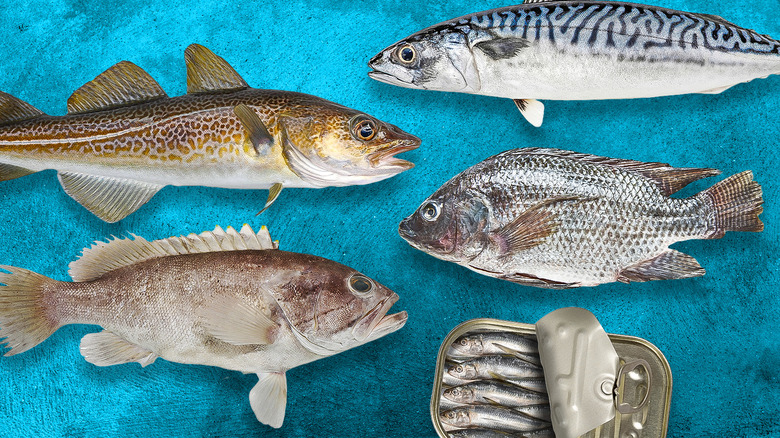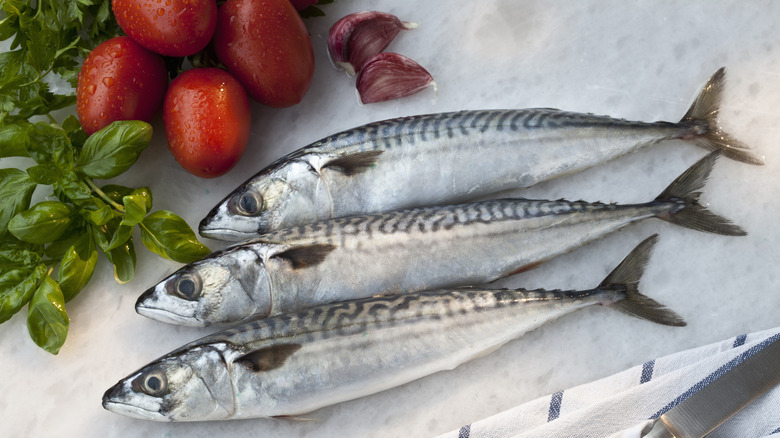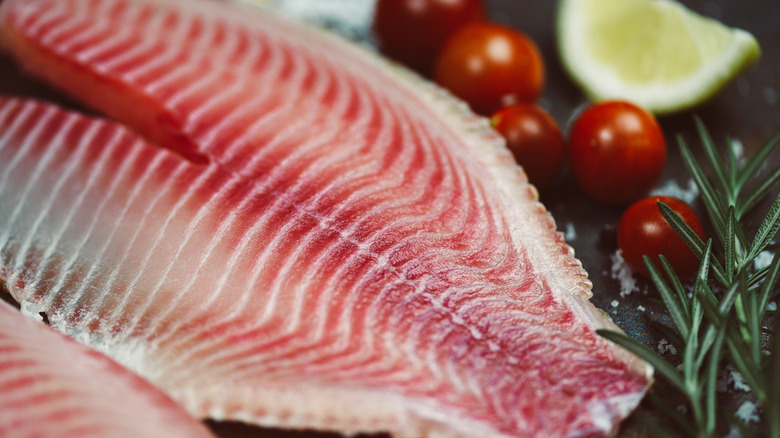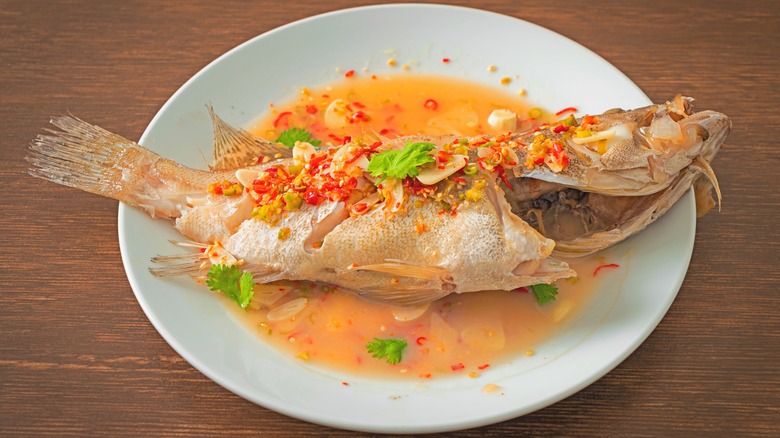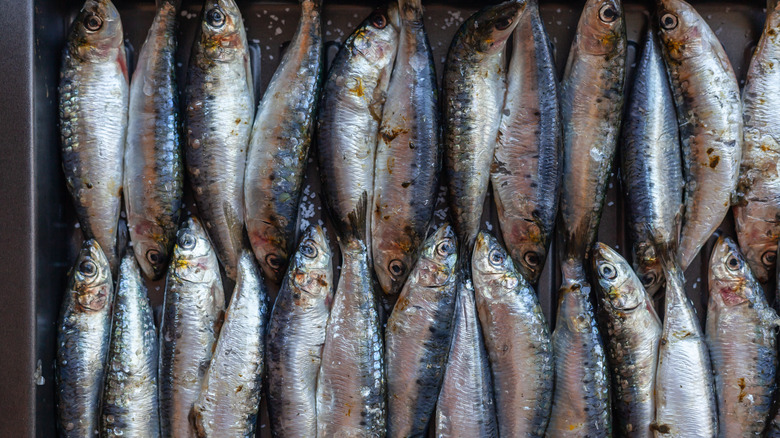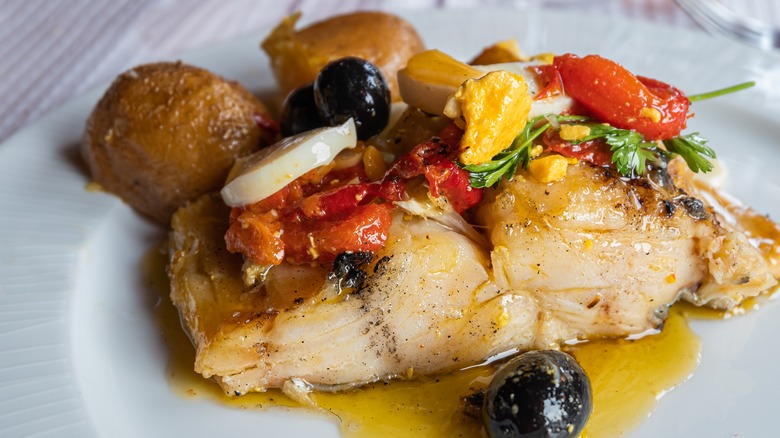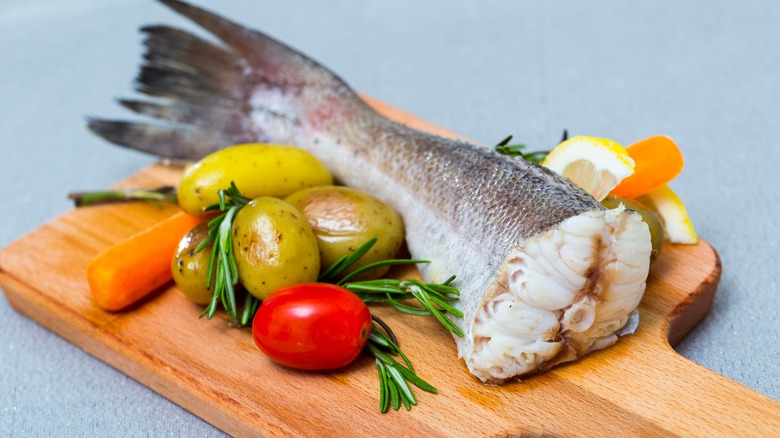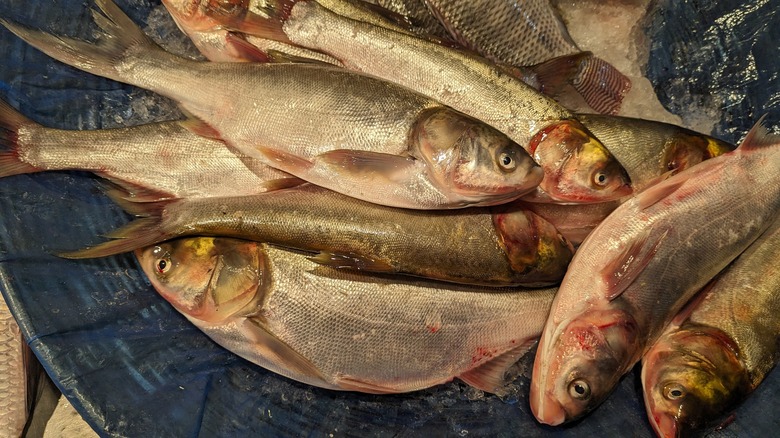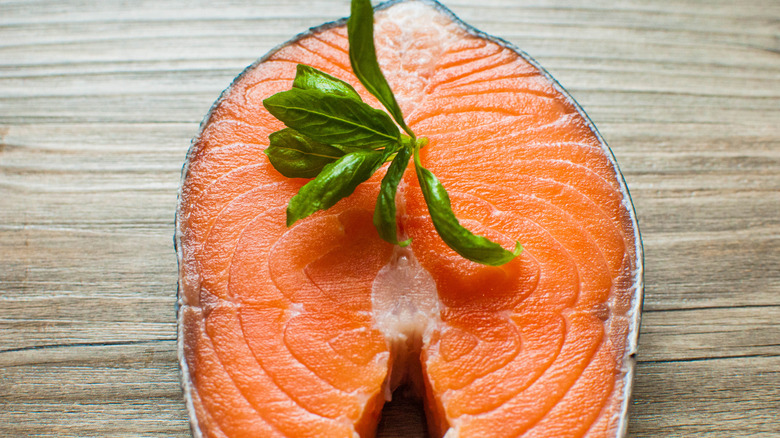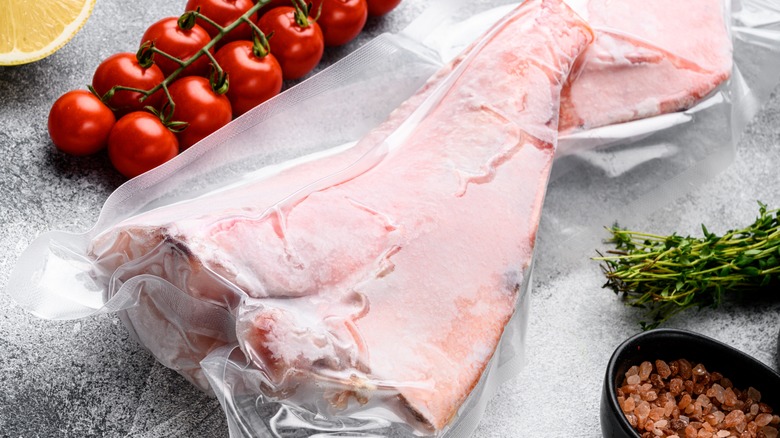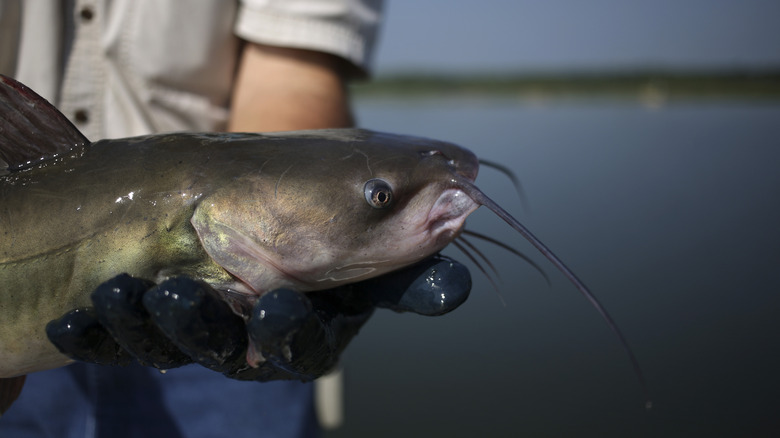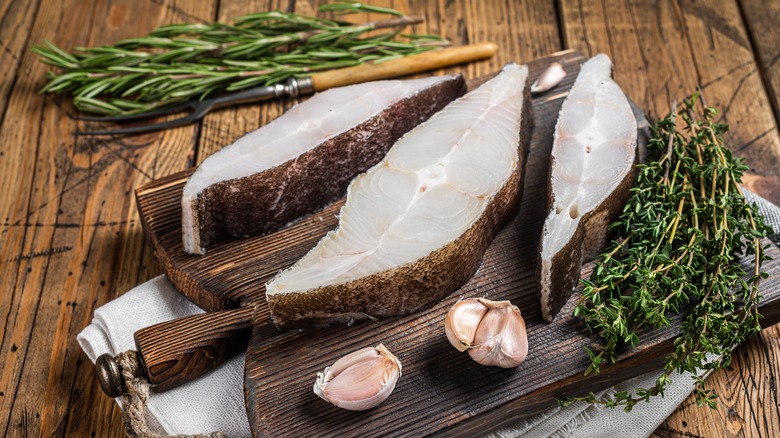6 Cheap Fish To Buy And 6 To Avoid
The world of fish is full of turbulence, and most of it is not actually ocean-related. Often, it can seem like the safest thing to do with fish is to be leery of it. But is that actually true? We're here to separate fact from fiction about which cheap fish to buy, and which to avoid.
As a long-time pescetarian cook and recipe developer focusing on healthier recipes on the blog At the Immigrant's Table, I've spent considerable time researching the best fish options available in North America. While fish can be a nutritious and delicious protein source, not all varieties are created equal, especially when it comes to budget-friendly options. Cheap fish can potentially pose health risks due to contaminants, unsustainable farming practices, or overfishing. When shopping for fish, it's crucial to be aware of these issues and know what to look for.
So whether you're buying fresh or frozen, jarred or canned fish, signs of quality include firm flesh, clear eyes, and a mild ocean scent. In this post, I'll share six affordable fish options that are both delicious and sustainable, as well as six types you might want to avoid. By making informed choices, you can enjoy fish without breaking the bank or compromising on quality.
Buy: Mackerel
Mackerel is an excellent affordable fish option, packed with nutritional benefits. This fish is rich in omega-3 fatty acids, vitamin D, and B vitamins. From a sustainability perspective, mackerel populations are generally well-managed. They're typically caught using methods with minimal bycatch or habitat damage.
Mackerel is best purchased fresh, and either grilled, baked, or smoked. Its strong flavor pairs well with bold seasonings or light vegetables. Canned mackerel is also widely available and affordable. While some find mackerel too "fishy," its health benefits and sustainability make it a smart choice for budget-conscious fish lovers. Just avoid king mackerel due to its high mercury levels, and you're mostly golden with this flavorful fish.
Avoid: Tilapia
While tilapia is often touted as an affordable fish option, what you should know before you eat it again is that there are concerns about its farming practices, particularly with imported varieties. Some overseas tilapia farms use antibiotics and chemicals banned in the U.S., raising health concerns. Environmental issues include poor waste management — earning tilapia the nickname "garbage fish" — and the potential spread of diseases to wild fish populations.
Nutritionally, tilapia is lower in beneficial omega-3 fatty acids compared to many other fish species. When farmed in overcrowded conditions, tilapia can have higher levels of omega-6 fatty acids, potentially promoting inflammation when consumed in excess. If you choose to eat tilapia, opt for fish raised in the U.S. or certified by reputable organizations like the Aquaculture Stewardship Council (ASC). These certifications ensure more responsible farming practices.
Buy: Grouper
Grouper is a popular white fish known for its mild, sweet flavor and firm texture. It's a good source of protein, vitamin B6, and selenium. While not as high in omega-3s as oily fish, grouper still contributes to a healthy diet. From a sustainability perspective, some grouper species are well-managed, while others face overfishing pressures. It's crucial to know the specific type and source of grouper you're buying. Look for grouper certified by the Marine Stewardship Council (MSC) or rated as a "Best Choice" or "Good Alternative" by Seafood Watch.
Do keep in mind that some affordable grouper offered in restaurants can be fake, and try to only buy from reputable sources. Grouper can be steamed, grilled, baked, deep-fried, or used in fish tacos. If you're not a fan of stronger-tasting fish, then grouper just may be the affordable fish for you.
Avoid: Basa
Basa, also known as pangasius or swai, is a type of catfish primarily farmed in Southeast Asia, especially Vietnam. While often affordable, there are several concerns about basa. Many basa farms have poor environmental practices, including water pollution and the use of antibiotics and chemicals banned in other countries. There are also food safety concerns due to the polluted waters where basa is often raised.
Nutritionally, basa is lower in beneficial omega-3 fatty acids compared to many other fish species. Additionally, there have been instances of mislabeling, where other fish species are sold as basa. Given these environmental and potential health concerns, it's generally advisable to choose alternative fish species.
Buy: Sardines
Sardines are small, oily, pack a significant nutritional punch, and are a type of canned fish you should have in your pantry. They're rich in omega-3 fatty acids, vitamin D, and calcium, especially when eaten with their soft bones. Sardines are also low on the food chain, meaning they accumulate fewer toxins than larger predatory fish.
From a sustainability standpoint, sardines are an excellent choice. They reproduce quickly and are typically caught using methods that have minimal impact on the ocean ecosystem. Canned sardines are particularly affordable and have a long shelf life, making them a convenient pantry staple. When buying fresh sardines, look for bright eyes, shiny skin, and a fresh, ocean smell. They should be eaten grilled, baked, or straight from the can with some bread, butter, sea salt, and herbs.
Avoid: Atlantic cod
Atlantic cod has been a popular fish for centuries, especially in fish and chips, but overfishing has led to severe depletion of its populations, particularly in the Northwest Atlantic. Many stocks are considered overfished or are subject to overfishing. The methods used to catch cod, such as bottom trawling, can also damage ocean habitats.
While cod can be delicious and high in nutrients, there are more sustainable white fish alternatives available. If you are still in the mood for cod, opt for Pacific cod or look for Atlantic cod from well-managed fisheries certified by the MSC.
Buy: Hake
Hake is a white fish that is similar to cod in flavor and provenance, but often more affordable and sustainable. It's a good source of protein, vitamin B12, and minerals like phosphorus and selenium. From a sustainability perspective, many hake fisheries are well-managed. Look for hake certified with the MSC checkmark or rated as a "Best Choice" or "Good Alternative" by Seafood Watch.
Hake has a mild, slightly sweet flavor and a tender texture. It's fantastic when cooked wrapped in parchment, which helps preserve its delicate shape, or when used in fish stews. Its affordability and sustainability make it an excellent alternative to more overfished white fish species.
Avoid: Asian carp
Asian carp, a blanket name for several species like bighead and silver carp, are invasive fish in North American waters. While eating them could theoretically help control their populations, as per a promotion campaign by the State of Illinois, there are several concerns. These fish tend to accumulate contaminants from polluted waters, potentially posing health risks. They're also bony and can be challenging to prepare, making them less appealing for any dish other than gefilte fish.
However, the biggest issue with eating carp in North America is that, from an ecological perspective, promoting Asian carp as a food fish could inadvertently create demand and lead to intentional spread. Additionally, there's a risk of confusion with native carp species, which are perfectly fine to eat.
Buy: Salmon steaks
Salmon steaks, cut from larger salmon, have all the benefits of salmon while being substantially cheaper. Salmon steaks, unlike fillets, are cross-sectional cuts that include portions from both sides of the fish and a section of backbone, which gives all the extra flavor during cooking. Seen as dangerous or fussy to prep, salmon steaks are rather rich in omega-3 fatty acids, protein, and vitamin D. But the same pitfalls that apply to farmed salmon, such as Atlantic salmon, apply here, so choose wisely. Opt for wild-caught Pacific salmon (like sockeye or coho) or look for farmed salmon certified by the ASC. These options are generally more sustainable than their farmed Atlantic counterparts.
When buying fresh salmon steaks, the color should be deep pink to orange. Salmon steaks are best grilled — after rolling for the best flavor — baked, or pan-seared. While more expensive than some other fish options on our list, the nutritional benefits, flavor, and availability of salmon steaks make it a worthwhile addition to your household fish shopping list.
Avoid: Orange roughy
Orange roughy, while sometimes affordable, is definitely a fish you want to avoid if you care about sustainability. This deep-sea fish grows very slowly and can live up to 100 years, making it highly vulnerable to overfishing as there's plenty of time to catch them, and they don't repopulate as often. Many orange roughy populations have been severely depleted due to overfishing. Additionally, the methods used to catch orange roughy, such as bottom trawling, can damage sensitive deep-sea ecosystems.
From a health perspective, orange roughy can accumulate high levels of mercury due to its long lifespan. While it's low in fat and calories, there are more sustainable and healthier fish options available, so skip this strangely named fish and opt for some of the good ones on our list.
Buy: Catfish
Ahh, catfish, one of the most underrated and least attractive fish in the world is actually one you should definitely be eating. Catfish, particularly U.S. farm-raised, can be a good affordable option for your dinner table. It's a lean source of protein and provides vitamin B12 and selenium. Most catfish in the U.S. market are farm-raised, which can be sustainable when certified by the ASC or the Global Aquaculture Alliance's Best Aquaculture Practices (BAP).
When buying fresh catfish, look for firm, moist flesh and a mild smell, and avoid fish with a strong, unpleasant odor or dry, discolored flesh. Catfish has a mild flavor and can be prepared in various ways — fried, baked, or grilled. Favorite preparations include breading and deep-frying it in oil to make catfish nuggets. While some criticize farm-raised catfish for potentially having lower omega-3 levels than wild-caught fish, U.S. farm-raised catfish is much better than many imported varieties due to its more stringent quality assurance.
Avoid: Atlantic Halibut
Atlantic halibut is proof that not all that glitters is gold, and that some fish, no matter how good it tastes, should probably be avoided if you want to keep enjoying seafood in the long run. While prized for its flavor, Atlantic halibut is a fish to avoid due to severe overfishing. Many Atlantic halibut populations are depleted and considered endangered. Halibut grows slowly and matures late, making it a likely target for overfishing. As it's a deep water fish, the way to catch it is also fairly damaging for the ocean floor.
From a health perspective, larger, older halibut can accumulate higher levels of contaminants, though that is not the main concern with this species. While halibut is a good source of protein and omega-3 fatty acids, there are more sustainable alternatives available. If you enjoy halibut, consider MSC-certified Pacific halibut, which is generally better managed. Given the critical state of Atlantic halibut populations, it's best to avoid this species entirely and opt for more sustainable seafood choices.
